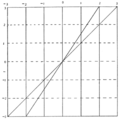Cephalic disorders (from the Greek word κεφάλη, meaning "head") are congenital conditions that stem from damage to, or abnormal development of, the budding nervous system. Cephalic means "head" or "head end of the body."
Cephalic disorders are not necessarily caused by a single factor, but may be influenced by hereditary or genetic conditions, nutritional deficiencies, or by environmental exposures during pregnancy, such as medication taken by the mother, maternal infection, or exposure to radiation (such disorders are more common in areas of the former Soviet Union affected by nuclear waste disposal problems, such as the area around the Mayak plant in Chelyabinsk, Russia.) Some cephalic disorders occur when the cranial sutures (the fibrous joints that connect the bones of the skull) join prematurely. Most cephalic disorders are caused by a disturbance that occurs very early in the development of the fetal nervous system.
The human nervous system develops from a small, specialized plate of cells on the surface of the embryo. Early in development, this plate of cells forms the neural tube, a narrow sheath that closes between the third and fourth weeks of pregnancy to form the brain and spinal cord of the embryo. Four main processes are responsible for the development of the nervous system: cell proliferation, the process in which nerve cells divide to form new generations of cells; cell migration, the process in which nerve cells move from their place of origin to the place where they will remain for life; cell differentiation, the process during which cells acquire individual characteristics; and cell death, a natural process in which cells die.
Damage to the developing nervous system is a major cause of chronic, disabling disorders and, sometimes, death in infants, children, and even adults. The degree to which damage to the developing nervous system harms the mind and body varies enormously. Many disabilities are mild enough to allow those afflicted to eventually function independently in society. Others are not. Some infants, children, and adults die, others remain totally disabled, and an even larger population is partially disabled, functioning well below normal capacity throughout life.
More common cephalic disorders

Where known, the ICD-10 code is listed below.
- Anencephaly (Q00.0)
- Colpocephaly (ICD10 unknown)
- Holoprosencephaly (Q04.2)
- Ethmocephaly (ICD10 unknown)
- Hydranencephaly (Q04.3)
- Iniencephaly (Q00.2)
- Lissencephaly (Q04.3)
- Megalencephaly (Q04.5)
- Microcephaly (Q02)
- Porencephaly (Q04.6)
- Schizencephaly (Q04.6)
Less common cephalies

- Acephaly (Q00.0)
- Exencephaly (ICD10 unknown)
- Macrocephaly (Q75.3)
- Micrencephaly (Q02)
- Otocephaly (Q18.2)
- Craniostenosis (ICD10 unknown)
- Brachycephaly (ICD10 unknown)
- Oxycephaly (Q75.0)
- Plagiocephaly (Q67.3
- Scaphocephaly (ICD10 unknown)
- Trigonocephaly (Q75.0)
- Polycephaly
